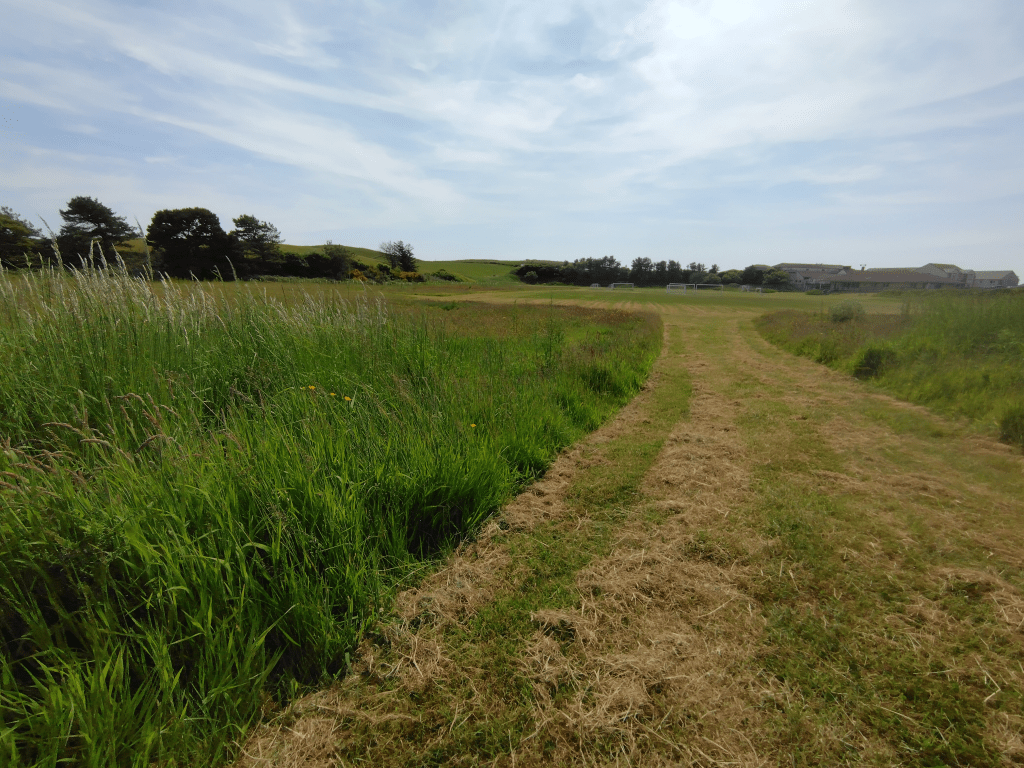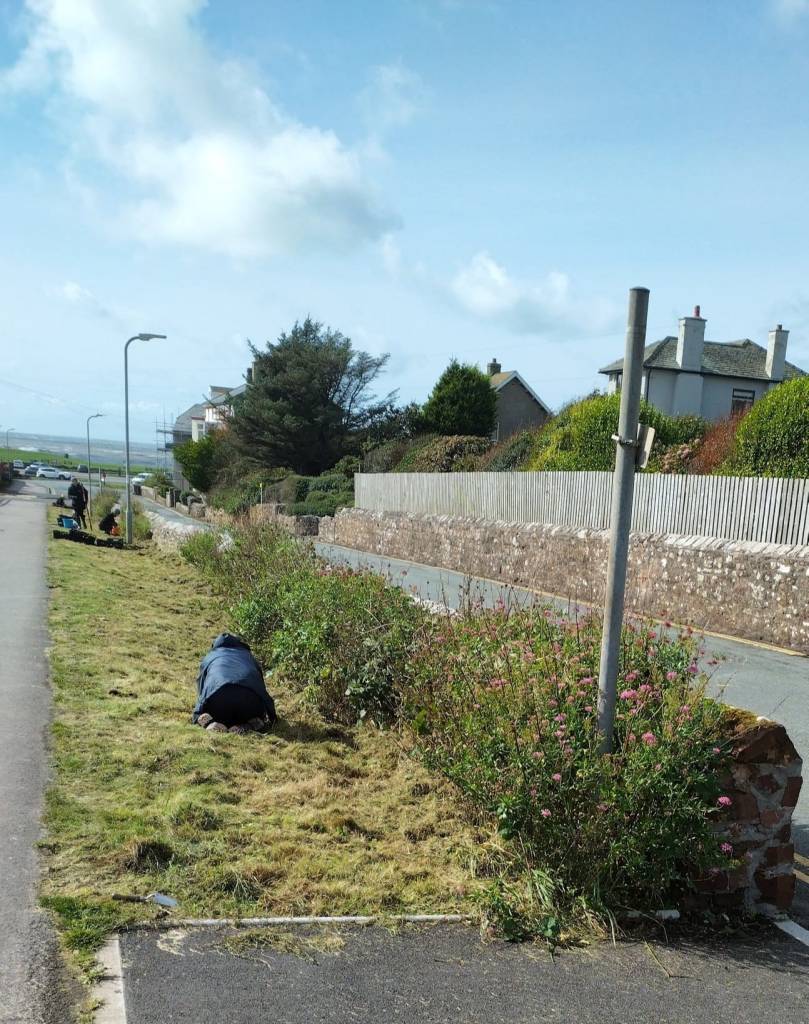Bees, wasps, hoverflies, butterflies, moths and beetles play an essential role in pollinating flowers, shrubs, trees and crops. However, due to the loss of flower-rich habitats over the last 50 years, pollinator species have declined. Developing habitats that encourage pollinators can help to reverse their decline.
Cumbria Wildlife Trust has been delivering its Planting for Pollinators project, working with communities across north and west Cumbria to increase flower-rich habits and increase number and diversity of pollinators.
In St Bees Cumbria Wildlife Trust has worked with Adams Recreation Ground, the Community Garden and St Bees Parish Council to help develop pollinator habits in three areas of the village. In autumn 2022 wildflower seeds were sown at Adams Recreation Ground to create a wildflower meadow and wildflower plug plants were also planted in the Community Garden. This September wildflower plug plants were planted in the verge behind the wall on Beach Road with the help of pupils from St Bees Village School.
One of the volunteers from the Community Garden describes the help offered by Cumbria Wildlife Trust as part of this project:
“Last year Cumbria Wildlife Trust supported the Community Garden through the Planting for Pollinators Project. They met us and surveyed the grounds and what was there and set us up with a management plan containing lots of useful advice on how to manage the garden long term. They offered a work day of free labour (CWT volunteers) to help us clear more ground and in the autumn provided us with some wild flower plug plants and, finally, some tools to add to our kit. All much appreciated.”
Cumbria Wildlife Trust also provided St Bees Green Future with wildflower seed packets to distribute among residents keen to provide pollinator-friendly habitats in their own gardens, as we can all take action to help reverse the decline of pollinators.

